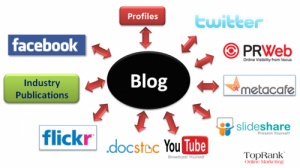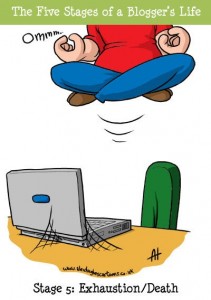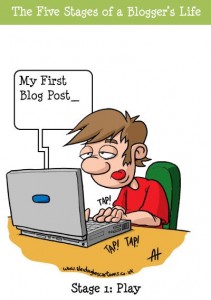At the outset of this course, through my inquiry project, and up until half way through Monday’s class I was certain that I was going to create “something with Twitter” to process my inquiry into social media in education. Initially, I thought I had a concrete plan: synthesize the why and how of using social media, particularly Twitter, in education and create a workshop or concrete piece to share and advocate through District collaborative forums. But as I investigated, bottomless searching really, I found that there are already a wealth of discussion forums, advocacy and collaborative pieces and expertise in this area. I know that this does not mean I can’t make a contribution, but I would like to take the opportunity this project provides to create my best, my most impactful contribution.
Furthermore, I explored extensive studies and research surrounding social media in education which inspired me to re-envision my role and the learning potentional available to my students. I want to design and create a structure that will enrich students’ learning, particularly critical new literacies often under-employed in formal education, such as critical, social and digital literacy. I also want to assist students’ own educational mind-set: to see themselves as legitimate co-creators of their learning. This was an area where my current virtual classroom and blogging had, what I felt to be, gaping holes. I learnt so much through my collaborative inquiry week that I knew I would one-day implement into my virtual classroom design and practice, but I wanted to immediately create something that would be an advocacy tool to communicate my learning to other educators, so they too could be as inspired and invested. But then, like a light-bulb I realized that I was slipping into my old patterns of frantic creation, flitting from one product to another. In my 10 minutes of fame I had very clearly laid out numerous complex issues that needed to be addressed for my students’ learning, for my utilization of blogs and virtual classrooms, and yet I was already adding it to a mental “to-do list” while I moved onto a Twitter creation, advocacy tool. So, fortunately, through discussion with colleagues, and with you Jenny, I was able to see that I need to refocus and take baby-steps. Therefore, I intend to utilize my research on social media in education to guide my design of new practices and a new platform for my class blogs.
Visual layout is a significant aspect to plan for. People receive information through all of their senses, but they receive significantly more from vision than any of the other four. Fifty percent of the human brain is dedicated to visual functions, and images are processed faster than text. The brain processes pictures all at once, and it is estimated that 65% of the population are visual learners (Hassett & Shieble, 2007). Keeping this at the forefront of my mind in design, I intend to switch to weebly, a fresh forum which is less cluttered than my current class blogs, and yet to ensure I incorporate visual symbols and resources to appropriately communicate for my students. Furthermore, after exploring Neilson’s “Eyetracking Study of Web Readers” there are three key patterns to be cognizant of in my initial design:
- Keep headlines and page titles simple and direct
- Web readers use both shallow and deep reading: text needs to be scannable, but also provide deeper answers that the readers seek
- Connections are critical: Users don’t just visit a site, they follow necessary hyperlinks to move through the web content as suits their needs
Although I’m aware of these design essentials, it is student learning (authentic, multiple, complex and collaborative) that is the guiding light of my design. So with baby steps I hope to create what is the best for my students and my practice, yet I will continue to advocate and collaborate on these issues in education. But, first thing’s first……..



